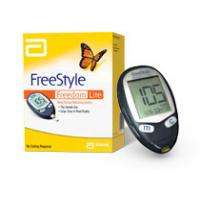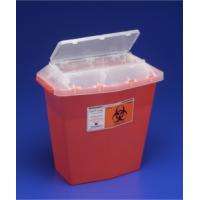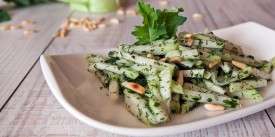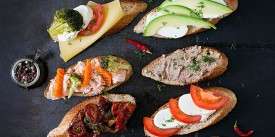
What is a Diabetic Exchange List?What is a Diabetic Exchange List?
  © Designer491 | Dreamstime.com There is a simple correlation between diabetes and the food you eat. – If your goal is to keep the disease under control and avoid dangerous and sometimes lethal diabetes complications, you must fine-tune your diet. Keeping the disease under control means constantly maintaining proper blood sugar levels and keeping your body weight at bay as well. Fine-tuning your diet doesn’t sound too hard, however, it might be trickier than you would expect. For successful management of diabetes, you diet must be well-balanced, which means in should incorporate a good variety of foods that would provide a balanced content of carbs, proteins, fats, and calories in the right proportions, and that is not an easy task. To keep things right, you need to get ready, you need to have a plan. This is where diabetic exchange lists come to the rescue, helping you eat properly and consequently, manage diabetes the way it should be managed. So, what are those diabetic exchange lists? Diabetic exchange lists are a powerful tool that is widely used by people with diabetes for meal planning purposes. They form the foundation of a meal planning system designed by a committee of the American Dietetic Association and the American Diabetes Association. Diabetic exchange lists consist of many different foods organized into six different categories (exchanges or exchange lists), each of which has about the same amount of carbohydrates, proteins, fats, and calories per serving. The lists can help you figure out how specific foods fit into your daily meal plan and practically help you build your own, custom diabetes-friendly meal plan that is most suitable for your taste. In other words, diabetic exchange lists make it easier for you to diversify your diet while ensuring your blood sugar levels and body weight stay under control. The six exchanges mentioned above are starch/bread list, meat list, vegetable list, fruit list, milk list, and fat list. Each item in the starch/bread list contains about 15 grams of carbs, 3 grams of protein, a bit of fat, and 80 calories. Among the items on this list are: one slice of bread, 3 cups of plain popcorn, half a cup of cooked pasta, half a cup of cooked cereals, half a cup mashed potato, half a cup of corn, 1/3 cup of cooked rice, and 1/3 cup of cooked beans. The meat list has 3 sub-categories: lean, medium-fat, and high-fat. People with diabetes should try to avoid the high-fat choices and eat more lean and medium-fat meats. Each serving on the meat list contains about 7 grams of protein. The amount of fat and number of calories depend on which subcategory the food belongs too. The meat list features: the lean sub-category – 1 Oz. of lean beef, pork, skinless chicken, or fish, 3 egg whites, and ¼ cup of cottage cheese; the medium-fat sub-category – 1 Oz. of ground beef, chicken with skin, and mozzarella cheese, 4 Oz. of tofu, and 1 egg; the high-fat sub-category includes – 1 Oz. of fried fish, beef ribs, sausage, and cheddar cheese. Each serving on the vegetable list contains approximately 5 grams of carbs, 2 grams of protein, 2-3 grams of fiber, no fat, and 25 calories. The serving size is 1 cup of raw vegetables or half a cup of cooked vegetables. The fruit list features items that contain 15 grams of carbs, 2 grams of fiber, and 60 calories per serving. One serving for some of the items on this list include: a half of a banana, 1 apple, orange, and kiwi, 12 cherries, 15 grapes, 3 prunes, and ¾ cup of blueberries. The milk list naturally includes milk and dairy products, each serving of which contains approximately 12 grams of carbs and 8 grams of protein. Similarly to the meat list, the milk list is divided into 3 sub-categories: skim milk, low-fat milk, and whole milk. The calories of each item on the milk list depends what sub-category it belongs to. Here are some of the items from this list: Skim milk – 1 cup of skim or 1% milk, 8 Oz. of plain fat-free yogurt; Low-fat milk – 1 cup of 2% milk, 8 Oz. of plain low-fat yogurt; Whole milk – 1 cup of whole milk, 8 Oz. of whole milk yogurt. The food items on the fat list mostly contain only fat. Some of the items, however, also contain a bit of protein. Each serving of the foods on the fat list contains approximately 5 grams of fat and 45 calories. In short, any certain food that appears on any specific list is nutritionally comparable with other foods on that list and therefore, it can be traded for (or exchanged) for an alternative food from the same list. For instance, half a cup of cooked cereal that people commonly eat for breakfast can be “exchanged” for a slice of bread if you wish to give cereal a break for a day or two. This is a simple example because bread a cereal seem to be related to the same group of foods. However, that is not always the case. You will find some foods grouped together on the same list even though they don’t seem to belong to the same group. For example, some non-meat foods appear as meat exchanges because of their protein and fat levels. If you like the idea and want to try diabetic exchange diet for yourself, first you need to talk with your nutritionist and other members of your diabetic care team. They will help you to decide if this approach to diet is right for you and if so, will assist you in creating the most appropriate meal plan.
| |||||||||||||||||||||||||




























